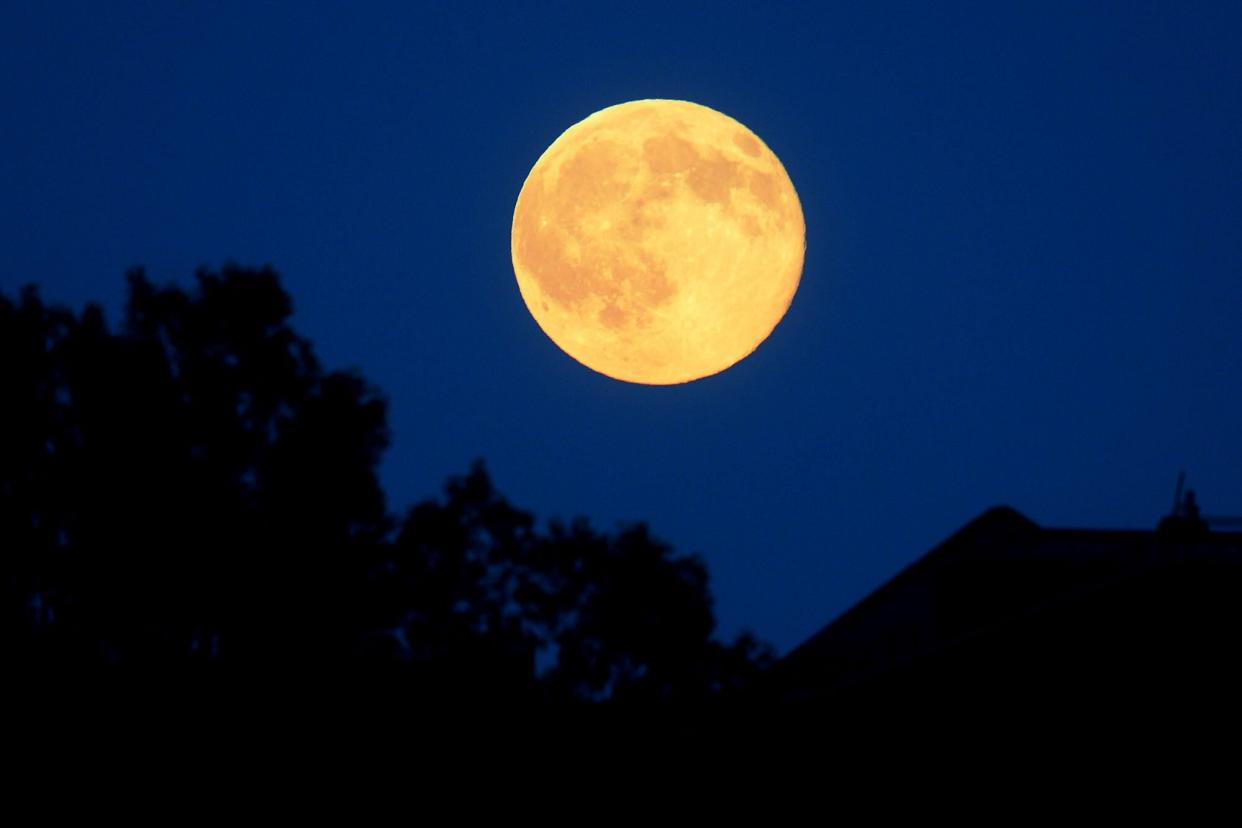The Hunter Moon Will Peak This Weekend, Appearing Larger and Brighter Than It Actually Is—Here's How to Spot the "Moon Illusion"

Paul Zinken/picture alliance via Getty Images
Fall is officially here—and so is the first full moon of the season, dubbed the Hunter Moon. The natural satellite will appear in the night sky this Sunday, October 9, and will reach its peak illumination at 4:54 p.m. According to the Old Farmer's Almanac, the full moon may appear larger and more orange as it drifts over the horizon during sunset.
October's full moon is called the Hunter Moon because it is historically the time of year when hunters prepared for the cold winter ahead by collecting and storing food. Additionally, the Hunter Moon is always the namesake given to the full moon that followers the Harvest Moon (which took place on September 10 this year). Other monikers given to this specific natural satellite include Drying Rice Moon, Falling Leaves Moon, Freezing Moon, and Migrating Moon.
Even if you don't plan to set aside time to watch the Harvest Moon rise, it's an event that's hard to miss. Since the moon is scheduled to drift over the horizon around sunset, a mirage called "moon illusion," will occur; this is when a natural satellite appear larger and brighter than it actually is.
Related: Researchers Have Discovered the First Interstellar Meteor to Ever Hit Earth
The Harvest Moon isn't the only celestial event taking place this weekend: According to space.com, on the same day that the moon rises, Mercury will reach its highest altitude in the pre-dawn sky. This means that the planet will be visible to stargazers before sunrise and will reach an altitude high enough to make it easier than usual to see.
Mercury is slated to reach its peak on October 9 and 10 for those living on the Northern Hemisphere. It will appear in the sky around 5:26 a.m. and will be slightly brighter than the star Vega—the brightest star in the northern constellation of Lyra.

